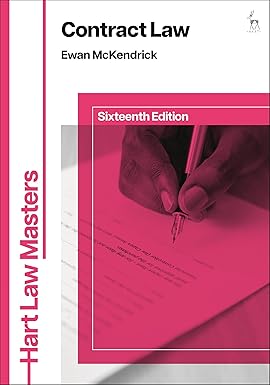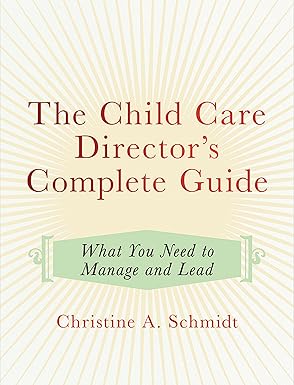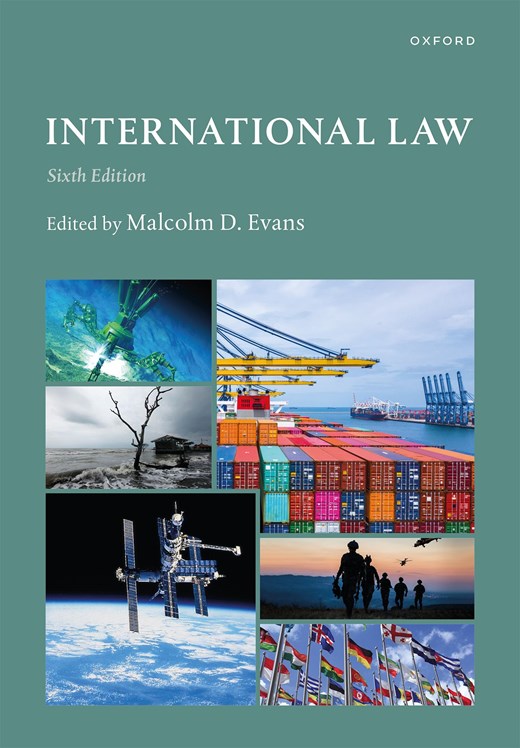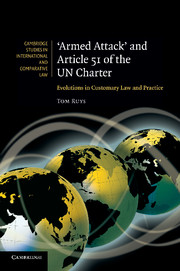The Legal Writing Handbook, Seventh Edition offers an effective process approach to teaching legal writing. The authors take students through each of the necessary stages of the writing process, from pre-writing, drafting, and editing, to the final draft. The authors step-by-step approach assures that students will master the writing skills they will need throughout their careers.
The Legal Writing Handbook is seven books in one: Book 1 provides students with an introduction to the U.S. Legal System; Book 2 provides an introduction to legal research, with both an introduction to sources and to research strategies; Book 3 introduces students to the process of writing formal and informal memos and opinion letters; Book 4 introduces students to persuasive writing and oral advocacy; Book 5 is a guide to effective writing; Book 6 is a guide to correct writing; and Book 7 focuses on the needs of ESL writers.
Key features:
- Chapters on reading and analyzing statutes and cases, mandatory and persuasive authority, and legal research
- Research portion has been re-written: There are now discrete chapters that describe primary sources (3), secondary sources (4), finding tools (5), citators (6), and on mandatory and persuasive authority (7)
- Step-by-step instruction on how to write formal memos, e-memos, and opinion letters
- Step-by-step instruction on how to write motion and appellate briefs
- A new section on mastering the sentence structures used in legal writing within ESL chapter.
- Online Diagnostic Exam for Grammar and Punctuation that grades itself and sends students to the parts of the book they need to review
چکیده فارسی
راهنمای نگارش حقوقی، ویرایش هفتم یک رویکرد فرآیندی مؤثر برای آموزش نگارش حقوقی ارائه میدهد. نویسندگان دانشآموزان را طی هر یک از مراحل ضروری فرآیند نوشتن، از پیشنویس، پیشنویس، و ویرایش تا پیشنویس نهایی، میبرند. رویکرد گام به گام نویسندگان تضمین میکند که دانشآموزان بر مهارتهای نوشتاری که در طول زندگی حرفهای خود نیاز دارند تسلط خواهند یافت.
راهنمای نگارش حقوقی هفت کتاب در یک کتاب است: کتاب 1 مقدمه ای با سیستم حقوقی ایالات متحده را به دانش آموزان ارائه می دهد. کتاب 2 مقدمه ای بر تحقیقات حقوقی، همراه با مقدمه ای بر منابع و راهبردهای تحقیق ارائه می دهد. کتاب 3 دانش آموزان را با فرآیند نوشتن یادداشت ها و نظرات رسمی و غیر رسمی آشنا می کند. کتاب 4 دانش آموزان را با نوشتن متقاعد کننده و حمایت شفاهی آشنا می کند. کتاب 5 راهنمای نوشتن موثر است. کتاب ششم راهنمای نگارش صحیح است. و کتاب 7 بر نیازهای نویسندگان ESL تمرکز دارد.
ویژگی های کلیدی:
- فصول مطالعه و تجزیه و تحلیل قوانین و موارد، اختیارات اجباری و قانع کننده و تحقیقات حقوقی
- بخش تحقیق دوباره نوشته شده است: اکنون فصول مجزایی وجود دارد که منابع اولیه (3)، منابع ثانویه (4)، ابزارهای یافتن (5)، نقلکنندگان (6)، و در مورد اختیارات اجباری و متقاعدکننده (7) را شرح میدهند.
- آموزش گام به گام نحوه نوشتن یادداشت های رسمی، یادداشت های الکترونیکی و نظرات نامه
- دستورالعمل گام به گام در مورد نحوه نوشتن مختصر حرکت و استیناف
- بخش جدیدی در مورد تسلط بر ساختار جملات مورد استفاده در نوشتن حقوقی در فصل ESL.
- آزمون تشخیصی آنلاین برای گرامر و نقطهگذاری که خود را نمره میدهد و دانشآموزان را به قسمتهایی از کتاب میفرستد که باید مرور کنند
ادامه ...
بستن ...
Ebook details:
عنوان: The Legal Writing Handbook: Analysis, Research, and Writing (Aspen Coursebook)
نویسنده: Laurel Currie Oates, Anne Enquist, Jeremy Francis
ناشر: Wolters Kluwer; 7 edition (February 1, 2018)
زبان: English
شابک: 1454895284, 978-1454895282
حجم: 60 Mb
فرمت: Epub + Converted Pdf
ادامه ...
بستن ...
Cover
Front Matter
Editorial Advisors Page
Title Page
Copyright
About Wolters Kluwer Legal & Regulatory U.S.
Dedication Page
Contents
Preface
Acknowledgments
Book I: Introduction to Legal Writing
Chapter 1: Making the Transition
§ 1.1 Understanding the Purpose of a Piece of Legal Writing
§ 1.2 Writing for Legal Readers
§ 1.3 Understanding Your Role as a Legal Writer
§ 1.4 Learning the Conventions of Legal Writing
§ 1.5 Advice for Specific Groups
§ 1.5.1 English Majors
§ 1.5.2 Philosophy Majors
§ 1.5.3 Journalism Majors and Journalists
§ 1.5.4 Science Majors and Scientists
§ 1.5.5 Writers from Other Cultures
Chapter 2: The United States Legal System
§ 2.1 The Three Branches of Government
§ 2.1.1 The Executive Branch
§ 2.1.2 The Legislative Branch
§ 2.1.3 The Judicial Branch
a. The Hierarchical Nature of the Court System
b. The Federal Courts
c. State Courts
d. Other Courts
§ 2.2 The Relationship Between the Federal and State Governments
§ 2.2.1 A Short History
§ 2.2.2 The Relationship Between Laws Enacted by Congress and Those Enacted by the State Legislatures
§ 2.2.3 The Relationship Between Federal and State Courts
§ 2.2.4 The Relationship Among Federal, State, and Local Prosecutors
Book II: Legal Research
Chapter 3: Primary Authority
§ 3.1 Constitutions
§ 3.1.1 United States Constitution
§ 3.1.2 State Constitutions
§ 3.1.3 City and County Charters
§ 3.2 Statutes
§ 3.2.1 Sources for Federal Statutes
a. Session Laws
b. Unannotated Codes
c. Annotated Codes
d. Using the Citation to Locate the Statute
§ 3.2.2 State Statutes
a. Session Laws
b. Unannotated Codes
c. Annotated Codes
d. Using the Citation to Find the Statute
§ 3.3 Regulations
§ 3.3.1 Federal Regulations
a. The Federal Register
b. The Code of Federal Regulations
§ 3.3.2 State Regulations
§ 3.4 Cases
§ 3.4.1 Federal Cases
a. Supreme Court Cases
b. Other Federal Courts
§ 3.4.2 State Cases
§ 3.5 Rules
§ 3.5.1 Federal Rules
a. United States Code, United States Code Annotated, and United States Code Service
b. Free Internet Sites
§ 3.5.2 State Rules
Chapter 4: Secondary Authority
§ 4.1 Background Reading
§ 4.1.1 The Internet
§ 4.1.2 Practice Manuals
§ 4.1.3 Hornbooks and Nutshells
§ 4.1.4 Pattern Jury Instructions
§ 4.1.5 Restatements
§ 4.1.6 Legal Encyclopedias
§ 4.2 More In-Depth Research
§ 4.2.1 Law Reviews and Journals
§ 4.2.2 Briefs
§ 4.2.3 Attorney General Opinions
§ 4.2.4 American Law Reports
§ 4.2.5 Specialized Electronic Services (Looseleaf Reporters) and Treatises
Chapter 5: Finding Tools
§ 5.1 Finding a Statute
§ 5.1.1 You Know the Citation
§ 5.1.2 You Do Not Know the Citation
a. Books
b. Free Websites
c. LexisNexis® and Westlaw
§ 5.2 Finding a Regulation
§ 5.2.1 Federal Regulations
§ 5.2.2 State Regulations
§ 5.3 Finding Cases
§ 5.3.1 Finding Cases That Interpret and Apply a Statute or Regulation
a. Case Notes/Notes of Decisions
b. Free Websites
§ 5.3.2 Finding Cases That Set Out, Interpret, or Apply a Common Law Rule
a. Digests
b. West’s Key Number System®
§ 5.4 Online Searches
§ 5.4.1 Fee-Based Services
a. Natural Language Searches
b. Terms and Connectors Searches
Chapter 6: Citators
§ 6.1 Introduction to Citators
§ 6.2 Types of Citators
§ 6.3 Cite Checking Using Shepard’s, KeyCite®, and BCite
Chapter 7: Mandatory vs. Persuasive Authority
§ 7.1 Which Jurisdiction’s Law Applies?
§ 7.2 What “Law” Will Be Binding on the Court?
§ 7.2.1 Issue Governed by State Statute and Cases That Have Interpreted and Applied That Statute
§ 7.2.2 Issue Governed by a Federal Statute and Regulations and Cases That Have Interpreted That Federal Statute and the Federal Regulations
§ 7.2.3 Issue Governed by Common Law
§ 7.3 Exercise
Chapter 8: Developing Effective Research Strategies
§ 8.1 Creating a Research Plan
§ 8.2 Researching Issues Governed by a Statute
§ 8.3 Finding Cases
§ 8.4 Organizing Your Research Notes
§ 8.5 Read as You Go
§ 8.6 Know When to Stop
§ 8.7 Make Sure That You Understand the Law
§ 8.7.1 Make Sure You Understand the Big Picture
§ 8.7.2 Make Sure You Understand the Statute, Regulation, or Court Rule
§ 8.7.3 Make Sure You Understand the General and Specific Rules
Chapter 9: Reading Statutes
§ 9.1 How Statutes Are Enacted
§ 9.1.1 Federal Statutes
§ 9.1.2 State Statutes
§ 9.2 How Regulations Are Promulgated
§ 9.3 The Relationship Among Statutes, Regulations, and Cases
§ 9.3.1 Federal Statute Governs
§ 9.3.2 State Statute Governs
§ 9.3.3 Both Federal and State Statutes Govern
§ 9.3.4 Party Argues That a Statute Is Unconstitutional
§ 9.3.5 Party Argues That an Agency Exceeded Its Authority in Promulgating a Particular Regulation
§ 9.4 Reading and Analyzing Statutes
§ 9.4.1 Finding Statutes Using the Citation
§ 9.4.2 Distinguishing Between the Text of the Statute and Other Material Provided by the Publisher
§ 9.4.3 Making Sure You Have the Right Version of the Statute
§ 9.4.4 Identifying the Elements or Requirements
§ 9.5 Exercise
Chapter 10: Reading Cases
§ 10.1 Which Cases Are Binding on Which Courts
§ 10.2 How Attorneys Use Cases
§ 10.2.1 Case as Authority for Rule
§ 10.2.2 Using Analogous Cases to Illustrate How the Courts Have Applied a Statute or Common Law Rule
§ 10.3 Reading and Analyzing Cases
§ 10.3.1 Finding Cases Using the Citation
§ 10.3.2 Distinguishing Between the Text of an Opinion and Material Added by the Publisher
§ 10.3.3 Reading the Opinion
§ 10.4 Exercise
Book III: Formal Memos, E-Memos, and Opinion Letters
Chapter 11: Drafting Memos
§ 11.1 Audience
§ 11.2 Purpose
§ 11.3 Conventions
§ 11.4 Sample Memos
§ 11.4.1 Example 1: Formal Memo
§ 11.4.2 Example 2: Formal Memo
§ 11.4.3 Example 3: E-Memo
§ 11.4.4 Example 4: E-Memo
§ 11.4.5 Example 5: E-Memo
Chapter 12: Getting the Assignment
Chapter 13: Drafting the Heading and Statement of Facts
§ 13.1 Drafting the Heading
§ 13.2 Drafting the Statement of Facts
§ 13.2.1 Decide What Facts to Include
a. Legally Significant Facts
b. Emotionally Significant Facts
c. Background Facts
d. Unknown Facts
§ 13.2.2 Select an Organizational Scheme
§ 13.2.3 Present the Facts Clearly and Concisely
§ 13.2.4 Present the Facts Accurately and Objectively
Chapter 14: Drafting the Issue Statement and Brief Answer
§ 14.1 Drafting the Issue Statement
§ 14.1.1 The “Under-Does-When” Format
a. Reference to the Applicable Law
b. Statement of the Legal Question
c. The Key Facts
§ 14.1.2 The “Whether” Format
§ 14.1.3 Multisentence Format
§ 14.1.4 Make Sure Your Issue Statement Is Easy to Read
§ 14.2 Drafting the Brief Answer
§ 14.2.1 Set Out Your Conclusion and Reasoning
Chapter 15: Drafting the Discussion Section
§ 15.1 Make Sure That You Understand the Big Picture
§ 15.1.1 Know What Your Readers Expect
§ 15.1.2 No Two Memos Are Alike
§ 15.2 Review Your Outline
§ 15.3 Draft the Introductory, or General Rule, Section
§ 15.3.1 Decide What Information You Need to Include
§ 15.3.2 Order the Information
§ 15.3.3 Prepare the First Draft
§ 15.3.4 Include a Citation to Authority for Each Rule
§ 15.4 Draft the Discussion of the Undisputed Elements
§ 15.4.1 Decide Where to Put Your Discussion of the Undisputed Elements
§ 15.4.2 Prepare the First Draft of Your Discussion ofthe Undisputed Elements
§ 15.5 Draft the Discussion of the Disputed Elements
§ 15.6 Set Out the Specific Rules
§ 15.7 Describe the Analogous Cases
§ 15.8 Draft the Arguments
§ 15.9 Identify Each Side’s Arguments
§ 15.9.1 Plain Language Arguments
§ 15.9.2 Analogous Case Arguments
§ 15.9.3 Policy Arguments
§ 15.10 Present the Arguments
§ 15.11 The Script Format
§ 15.11.1 Set Out the Parties’ Arguments
§ 15.11.2 Predict How the Court Will Decide the Element
§ 15.12 Integrated Format
§ 15.13 Avoid the Common Problems
§ 15.13.1 Give Appropriate Weight to Each Side’s Arguments
§ 15.13.2 Write Sentences That Are Easy to Read
Chapter 16: Drafting the Formal Conclusion
§ 16.1 Summarize Your Conclusions
§ 16.2 Present Your Advice
Chapter 17: Revising, Editing, and Proofreading the Memo
§ 17.1 Revise Your Draft
a. Check Content
b. Check to Make Sure That the Information Is Presented Accurately and Objectively
c. Check to Make Sure That the Discussion Section Is Well Organized
d. Check to Make Sure That the Connections Are Explicit
1. Roadmaps
2. Topic Sentences, Signposts, and Transitions
3. Dovetailing
4. Coherence
§ 17.2 Edit Your Draft
§ 17.2.1 Writing Effective Sentences
a. Passive Constructions
b. Nominalizations
c. Expletive Constructions
d. Dangling Modifiers
§ 17.2.2 Write Concisely
§ 17.2.3 Write Precisely
a. Select the Correct Term
b. Use Terms Consistently
c. Make Sure the Subjects and Verbs Go Together
d. Compare or Contrast Like Things
§ 17.2.4 Writing Correctly
§ 17.3 Proofreading
§ 17.4 Citations
§ 17.5 Checklist for Memo Written Using the Script Format
§ 17.6 Checklist for Formal Memo Written Using an Integrated Format
Chapter 18: Drafting Memos Requiring Other Types of Analysis
§ 18.1 Factor Analysis
§ 18.1.1 Outline for Issues Involving a Factor Analysis
§ 18.1.2 Draft the Introductory or General Rule Section
§ 18.1.3 Draft the Discussion of the Undisputed Factors
§ 18.1.4 Draft the Discussion of the Disputed Factors
§ 18.1.5 Draft the Paragraph or Block of Paragraphsin Which You Weigh the Factors
§ 18.2 Balancing of Competing Interests
§ 18.2.1 Outlines for Issues Requiring the Balancingof Competing Interests
§ 18.2.2 Draft the Introductory or General Rule Section
§ 18.2.3 Draft the Discussion of the Competing Interests
§ 18.3 Issue of First Impression
§ 18.3.1 Circuit Split
§ 18.3.2 The Statute Is Ambiguous, and There Are No Regulations or Cases That Have Interpreted That Statute
§ 18.3.3 Arguments Based on Agency Decisions
§ 18.3.4 Policy Arguments
Chapter 19: E-Memos
§ 19.1 Audience
§ 19.2 Purpose
§ 19.3 Conventional Formats for E-Memos
§ 19.4 Getting the Assignment
§ 19.5 Researching the Issue
§ 19.6 Drafting the Subject Line
§ 19.7 Drafting the Introductory Sentence or Paragraph
§ 19.8 Drafting the Summary of Facts
§ 19.9 Summary of the Applicable Law
§ 19.9.1 The Rules
§ 19.9.2 The Analogous Cases
§ 19.10 Application of the Law to the Facts
§ 19.11 Concluding Paragraph
§ 19.12 Writing Style
§ 19.13 Client Confidentiality
§ 19.14 Checklist for Critiquing E-Memos
Chapter 20: Drafting Opinion Letters
§ 20.1 The Assignment
§ 20.2 Know Your Audience and Your Purpose
§ 20.2.1 The Audience for an Opinion Letter
§ 20.2.2 The Purpose of an Opinion Letter
§ 20.3 Prepare the First Draft of the Letter
§ 20.3.1 The Introductory Paragraph
§ 20.3.2 Statement of the Issue
§ 20.3.3 Opinion
§ 20.3.4 Summary of the Facts
§ 20.3.5 Explanation
§ 20.3.6 Advice
§ 20.3.7 Concluding Paragraph
§ 20.3.8 Warnings
§ 20.4 Revising, Editing, and Proofreading the Opinion Letter
§ 20.4.1 Drafting a Well-Written Letter
§ 20.4.2 Using an Appropriate Tone
§ 20.4.3 Checklist for Critiquing the Opinion Letter
§ 20.5 Sample Client Letters
Book IV: Briefs and Oral Argument
Chapter 21: Writing a Motion Brief
§ 21.1 Motion Briefs
§ 21.1.1 Audience
§ 21.1.2 Purpose
§ 21.1.3 Conventions
§ 21.2 State v. Patterson
§ 21.3 Constructing a “Theory of the Case”
§ 21.4 The Caption
§ 21.5 Introductory Paragraph/Prayer for Relief
§ 21.6 The Statement of Facts
§ 21.6.1 Select the Facts
a. Background Facts
b. Legally Significant Facts
c. Emotionally Significant Facts
§ 21.6.2 Select an Organizational Scheme
§ 21.6.3 Present the Facts in a Light Favorable to Your Client
a. Create a Favorable Context
b. Tell the Story from the Client’s Point of View
c. Emphasize the Facts That Support Your Theory of the Case, and De-emphasize Those That Do Not
1. Airtime
2. Detail
3. Positions of Emphasis
4. Sentence Length
5. Active and Passive Voice
6. Dependent and Main Clauses
d. Select Words Both for Their Denotation and Their Connotation
§ 21.6.4 Checklist for Critiquing the Statement of Facts
§ 21.7 Drafting the Issue Statement
§ 21.7.1 Select the Lens
§ 21.7.2 Select a Format
§ 21.7.3 Make Your Issue Statement Subtly Persuasive
§ 21.7.4 Checklist for Critiquing the Issue Statement
§ 21.8 Ordering the Issues and Arguments
§ 21.8.1 Present the Issues and Arguments in a Logical Order
§ 21.8.2 Decide Which Issues and Arguments Should Be Presented First
§ 21.9 Drafting the Argumentative Headings
§ 21.9.1 Use Your Argumentative Headings to Define the Structure of the Argument
§ 21.9.2 Use Your Argumentative Headings to Persuade
§ 21.9.3 Make Your Headings Readable
§ 21.9.4 Follow the Conventions: Number, Placement,and Typefaces
§ 21.9.5 Checklist for Critiquing the Argumentative Headings
§ 21.10 Drafting the Arguments
§ 21.10.1 Identify Your Assertions and Your Support for Those Assertions
a. Setting Out Your Assertion
b. Supporting Your Assertion
§ 21.10.2 Select an Organizational Scheme
§ 21.10.3 Present the Rules in the Light Most Favorable to Your Client
§ 21.10.4 Present the Cases in the Light Most Favorable to Your Client
§ 21.10.5 Present the Arguments in the Light Most Favorable to Your Client
a. Present Your Own Arguments First
b. Give the Most Airtime to Your Own Arguments
c. Use Language That Strengthens Your Arguments and Undermines the Other Side’s Arguments
d. Use the Same Persuasive Techniques You Used in Setting Out the Facts,Issues, Rules, and Analogous Cases
§ 21.10.6 Checklist for Critiquing the Argument
§ 21.11 The Prayer for Relief
§ 21.12 Signing the Brief
§ 21.13 Sample Briefs
Chapter 22: Writing an Appellate Brief
§ 22.1 Practicing Before an Appellate Court
§ 22.1.1 Types of Appellate Review
§ 22.1.2 Time Limits for Filing the Notice of Appeal or Petition for Discretionary Review
§ 22.1.3 The Notice of Appeal or Notice for Discretionary Review
§ 22.1.4 Scope of Review
§ 22.1.5 The Record on Appeal
§ 22.1.6 Types of Briefs
§ 22.2 Understanding Your Audience, Your Purpose, and the Conventions
§ 22.2.1 Audience
§ 22.2.2 Purpose
§ 22.2.3 Conventions
§ 22.3 Getting the Case: United States v. Josephy
§ 22.4 Preparing to Write the Brief
§ 22.4.1 Reviewing the Record for Error
§ 22.4.2 Selecting the Issues on Appeal
a. Was There an Error?
b. Was the Error Preserved?
c. What Is the Standard of Review?
d. Was the Error Harmless?
§ 22.4.3 Preparing an Abstract of the Record
§ 22.4.4 Preparing the Record on Appeal
§ 22.5 Researching the Issues on Appeal
§ 22.6 Planning the Brief
§ 22.6.1 Analyzing the Facts and the Law
§ 22.6.2 Developing a Theory of the Case
§ 22.6.3 Selecting an Organizational Scheme
a. Deciding on the Number of Issues and Headings
b. Ordering the Issues and Arguments
§ 22.7 Preparing the Cover
§ 22.8 Preparing the Table of Contents
§ 22.9 Preparing the Table of Authorities
§ 22.10 Drafting the Jurisdictional Statement
§ 22.11 Drafting the Statement of Issues Presented for Review
§ 22.11.1 Select a Format
§ 22.11.2 Make the Issue Statement Subtly Persuasive
a. State the Question So That It Suggests the Conclusion You Want the Court to Reach
b. Emphasize the Facts That Support Your Theory of the Case
c. Emphasize or De-Emphasize the Burden of Proof and Standard of Review
§ 22.11.3 Make Sure the Issue Statement Is Readable
§ 22.12 Drafting the Statement of the Case
§ 22.12.1 Check the Rules
§ 22.12.2 Draft the Statement of the Case
§ 22.12.3 Select the Facts
a. Legally Significant Facts
b. Emotionally Significant Facts
c. Background Facts
§ 22.12.4 Select an Organizational Scheme
§ 22.12.5 Present the Facts in the Light Most Favorable to the Client
a. Create a Favorable Context
b. Tell the Story from the Client’s Point of View
c. Emphasize Those Facts That Support Your Theory of the Case and De-emphasize Those That Do Not
1. Airtime
2. Detail
3. Positions of Emphasis
4. Sentence and Paragraph Length
5. Sentence Construction
6. Active and Passive Voice
d. Choose Words Carefully
e. Be Subtly Persuasive
§ 22.13 Drafting the Summary of the Argument
§ 22.14 Drafting the Argumentative Headings
§ 22.14.1 Use the Argumentative Headings to Outline the Argument for the Court
§ 22.14.2 Use the Argumentative Headings to Persuade
a. Make a Positive Assertion
b. Provide Support for Your Assertions
c. Make Sure That Your Headings Are Neither Too Specific nor Too General
d. Make Your Headings Readable
e. Use the Same Persuasive Techniques You Used in Drafting the Issue Statements and Statement of Facts
§ 22.14.3 Use Conventional Formats for Headings
§ 22.15 Drafting the Arguments
§ 22.15.1 Knowing What You Need, and Want, to Argue
§ 22.15.2 Selecting an Organizational Scheme
§ 22.15.3 Presenting the Rules, Descriptions of Analogous Cases, and Arguments in the Light Most Favorable to Your Client
a. Presenting the Rules
b. Presenting the Cases
c. Constructing and Presenting the Arguments
d. Using Quotations
e. Responding to the Other Side’s Arguments
f. Avoiding the Common Problem of Neglecting to Make Explicit Connections
g. Avoiding the Common Problem of Not Dealing with Weaknesses
h. Avoiding the Mistake of Overlooking Good Arguments
§ 22.16 Drafting the Conclusion or Prayer for Relief
§ 22.17 Preparing the Signature Block
§ 22.18 Preparing the Appendix
§ 22.19 Revising, Editing, and Proofreading
§ 22.20 Sample Briefs
Chapter 23: Oral Advocacy
§ 23.1 Audience
§ 23.2 Purpose
§ 23.3 Preparing for Oral Argument
§ 23.3.1 Deciding What to Argue
§ 23.3.2 Preparing an Outline
§ 23.3.3 Practicing the Argument
§ 23.3.4 Reviewing the Facts and the Law
§ 23.3.5 Organizing Your Materials
a. Notes or Outline
b. The Briefs
c. The Record
d. The Law
§ 23.4 Courtroom Procedures and Etiquette
§ 23.4.1 Seating
§ 23.4.2 Before the Case Is Called
§ 23.4.3 Courtroom Etiquette
§ 23.4.4 Appropriate Dress
§ 23.5 Making the Argument
§ 23.5.1 Introductions
§ 23.5.2 Opening
§ 23.5.3 Statement of the Issues
a. The Moving Party
b. The Responding Party
§ 23.5.4 Summary of the Facts
a. The Moving Party
b. The Responding Party
§ 23.5.5 The Argument
§ 23.5.6 Answering Questions
§ 23.5.7 The Closing
§ 23.5.8 Rebuttal
§ 23.6 Delivering the Argument
§ 23.6.1 Breathe
§ 23.6.2 Do Not Read Your Argument
§ 23.6.3 Maintain Eye Contact
§ 23.6.4 Do Not Slouch, Rock, or Put Your Hands in Your Pockets
§ 23.6.5 Limit Your Gestures and Avoid Distracting Mannerisms
§ 23.6.6 Speak So That You Can Be Easily Understood
§ 23.7 Making Your Argument Persuasive
§ 23.8 Handling the Problems
§ 23.8.1 Counsel Has Misstated Facts or Law
§ 23.8.2 You Make a Mistake
§ 23.8.3 You Do Not Have Enough Time
§ 23.8.4 You Have Too Much Time
§ 23.8.5 You Do Not Know the Answer to a Question
§ 23.8.6 You Do Not Understand a Question
§ 23.8.7 You Become Flustered or Draw a Blank
§ 23.8.8 You Are Asked to Concede a Point
§ 23.9 A Final Note
§ 23.9.1 Checklist for Critiquing the Oral Argument
Book V: A Guide to Effective Writing
Chapter 24: Effective Writing—The Whole Paper
§ 24.1 The Psychology of Writing
§ 24.2 Outlines, Writing Plans, and Ordered Lists
§ 24.2.1 Read It All; Mull It Over
§ 24.2.2 Don’t Overlook Obvious Ways to Organize
§ 24.2.3 Find Order Using a Three-Column Chart
§ 24.2.4 Talk to a Colleague
§ 24.2.5 Try a New Analogy or Format
§ 24.2.6 Create a Dining Room Table, Bedroom Floor,or Multiple Monitor Outline
§ 24.2.7 Consider Your Reader and Purpose and How You View the Case
§ 24.3 Drafting the Document
§ 24.3.1 Give Yourself Optimal Writing Conditions
§ 24.3.2 Trick Yourself into Getting Started
§ 24.3.3 Write What You Know Best First
§ 24.3.4 “Get the Juices Flowing”
§ 24.3.5 Take It One Step at a Time
§ 24.3.6 Stay Focused
§ 24.3.7 Reward Yourself
§ 24.3.8 Organize Your Drafts
§ 24.4 Revising
§ 24.4.1 Develop a Revision Checklist
§ 24.4.2 Write an After-the-Fact Outline
§ 24.4.3 Do a Self-Critique
§ 24.4.4 Check for Unity and Coherence
§ 24.5 Editing
§ 24.6 Proofreading
Chapter 25: Connections Between Paragraphs
§ 25.1 Headings
§ 25.2 Roadmaps and Signposts
§ 25.2.1 Roadmaps
§ 25.2.2 Signposts
Chapter 26: Effective Paragraphs
§ 26.1 The Function of a Paragraph
§ 26.2 Paragraph Patterns
§ 26.3 Unity and Coherence in Paragraphs
§ 26.3.1 Paragraph Unity
§ 26.3.2 Paragraph Coherence
a. Using Familiar Organizational Patterns
b. Using Key Terms
c. Using Sentence Structure and Other Coherence Devices
§ 26.4 Paragraph Length
§ 26.5 Topic and Concluding Sentences
§ 26.5.1 Stated Topic Sentences
§ 26.5.2 Implied Topic Sentences
§ 26.5.3 Concluding Sentences
§ 26.6 Paragraph Blocks
Chapter 27: Connections Between Sentences
§ 27.1 Generic Transitions
§ 27.1.1 Using Generic Transitions
§ 27.1.2 Problems with Generic Transitions
§ 27.2 Orienting Transitions
§ 27.3 Substantive Transitions
§ 27.3.1 The Structure of Substantive Transitions:Dovetailing
§ 27.3.2 The Content of Substantive Transitions
a. Bridging the Gap Between Law and Application
b. Applying Another Court’s Rationale
c. Gathering Together Several Facts
d. Bridging the Gap Between Sections of a Document
Chapter 28: Effective Sentences
§ 28.1 Active and Passive Voice
§ 28.1.1 Identifying Active and Passive Voice
§ 28.1.2 Effective Use of Active Voice
§ 28.1.3 Effective Use of Passive Voice
§ 28.2 Concrete Subjects
§ 28.3 Action Verbs
§ 28.4 Distance Between Subjects and Verbs
§ 28.5 Sentence Length
§ 28.5.1 The Reader
§ 28.5.2 The Context
§ 28.5.3 The Power of the Short Sentence
§ 28.6 Emphasis
§ 28.6.1 Underlining
§ 28.6.2 Using Positions of Emphasis
§ 28.6.3 Combining the End Position with Other Strategies for Emphasis
§ 28.6.4 Using Punctuation for Emphasis
§ 28.6.5 Using Single-Word Emphasizers
§ 28.6.6 Changing the Normal Word Order
§ 28.6.7 Repeating Key Words
§ 28.6.8 Setting up a Pattern
§ 28.6.9 Variation: Deliberately Breaking a Pattern
§ 28.7 Sentence Structures That Highlight Similarities or Differences
Chapter 29: Effective Words
§ 29.1 Diction and Precision
§ 29.1.1 Colloquial Language
§ 29.1.2 Reader Expectations and Idioms
§ 29.1.3 Not-Really-Synonymous Synonyms
§ 29.1.4 The Same Term for the Same Idea
§ 29.1.5 Precise Comparisons
§ 29.1.6 Subject-Verb-Object Mismatch
§ 29.1.7 Grammatical Ambiguities
§ 29.2 Conciseness
§ 29.2.1 Don’t State the Obvious
§ 29.2.2 Don’t Start Too Far Back
§ 29.2.3 Don’t Overuse Quotations
§ 29.2.4 Create a Strong Subject-Verb Unit
§ 29.2.5 Avoid Throat-Clearing Expressions
§ 29.2.6 Don’t Use Pompous Language
§ 29.2.7 Don’t Repeat Yourself Needlessly
§ 29.2.8 Clean Out the Clutter
§ 29.2.9 Focus and Combine
§ 29.2.10 Avoid Excessive Conciseness
§ 29.3 Plain English vs. Legalese
§ 29.3.1 Archaic Word Choice
§ 29.3.2 Foreign Phrases
§ 29.3.3 Use of Terms of Art and Argot
§ 29.3.4 Use of “Said” and “Such” as Adjectives
§ 29.3.5 Omission of the Article “The”
§ 29.3.6 Absence of First- and Second-Person Pronouns
§ 29.4 Gender-Neutral Language
§ 29.4.1 Generic Use of “Man”
§ 29.4.2 Generic Use of “He”
a. Revise the Sentence So That the Antecedent and Its Pronoun Are Plural
b. Revise the Sentence So That a Pronoun Is Not Needed
c. Replace the Masculine Noun and Pronoun with “One,” “Your,” or “He” or “She,” as Appropriate
d. Alternate Male and Female Examples and Expressions
e. Repeat the Noun Rather Than Use an Inappropriate Masculine Pronoun
§ 29.4.3 Gender-Neutral Job Titles
§ 29.4.4 Sexist Modifiers
§ 29.4.5 Other Sexist Language
§ 29.5 Bias-Free Language
§ 29.5.1 Avoid Irrelevant Minority References
§ 29.5.2 Stay Abreast of the Preferred Terminology
a. Prefer Self-Chosen Labels
b. Choose Precise, Accurate Terms
c. Whenever Possible, Prefer the Specific Term Over the General Term
d. Prefer Terms That Describe What People Are Rather Than What They Are Not
e. Notice That a Term’s Connotations May Change as the Part of Speech Changes
f. In Selecting Terms, Emphasize the Person Over the Difference
g. Avoid Terms That Are Patronizing or Overly Euphemistic or That Paint People as Victims
h. Avoid Idioms That Are Steeped in Prejudice
Chapter 30: Eloquence
§ 30.1 Purple Prose
§ 30.2 Common Features of Eloquent Writing
§ 30.2.1 Repetition of Sound
§ 30.2.2 Cadence
§ 30.2.3 Variety in Sentence Length
§ 30.2.4 Variety in Sentence Openers
§ 30.2.5 Balance and Symmetry
§ 30.2.6 Onomatopoeia
§ 30.2.7 Simile and Metaphor
§ 30.2.8 Personification
Book VI: A Guide to Correct Writing
Chapter 31: Grammar
§ 31.1 Basic Sentence Grammar
§ 31.1.1 Sentence Patterns
§ 31.1.2 Single-Word Modifiers
§ 31.1.3 Phrases
a. Gerunds
b. Participles
c. Infinitives
d. Absolutes
§ 31.1.4 Clauses
§ 31.1.5 Appositives
§ 31.1.6 Connecting Words
a. Coordinating Conjunctions
b. Correlative Conjunctions
c. Conjunctive Adverbs
§ 31.2 Fragments
§ 31.2.1 Missing Main Verb
§ 31.2.2 Subordinate Clauses Trying to Pose as Sentences
§ 31.2.3 Permissible Uses of Incomplete Sentences
a. In Issue Statements Beginning with “Whether”
b. As Answers to Questions
c. In Exclamations
d. In Quoted Material
e. For Stylistic Effect
f. As Transitions
§ 31.3 Verb Tense and Mood
§ 31.3.1 Tense
§ 31.3.2 Mood
§ 31.4 Subject-Verb Agreement
§ 31.5 Pronouns
§ 31.5.1 Each Pronoun Should Clearly Refer Back to Its Antecedent
§ 31.5.2 Avoid the Use of “It,” “This,” “That,” “Such,”and “Which” to Refer Broadly to a General Idea in a Preceding Sentence
§ 31.5.3 Pronouns Should Refer Back to Nouns, Not Adjectives
§ 31.5.4 Pronoun-Antecedent Agreement
§ 31.6 Modifiers
§ 31.6.1 Misplaced Modifiers
§ 31.6.2 Dangling Modifiers
§ 31.6.3 Squinting Modifiers
§ 31.7 Parallelism
Chapter 32: Punctuation
§ 32.1 The Comma
§ 32.2 The Semicolon
§ 32.3 The Colon
§ 32.4 The Apostrophe
§ 32.5 Other Marks of Punctuation
§ 32.5.1 Quotation Marks
a. Identification of Another’s Written or Spoken Words
b. Block Quotations
c. Effective Lead-ins for Quotations
d. Quotations Within Quotations
e. Quotation Marks with Other Marks of Punctuation
f. Other Uses for Quotation Marks
§ 32.5.2 Ellipses
§ 32.5.3 Brackets
§ 32.5.4 Parentheses
a. To Enclose Short Explanations of Cases Within Citations
b. To Refer Readers to Attached or Appended Documents
c. To Confirm Numbers
d. To Enclose Numerals or Letters That Introduce the Individual Items in a List
e. To Announce Changes to a Quotation That Cannot Be Shown by Ellipses or Brackets
f. To Introduce Abbreviations After a Full Name Is Given
§ 32.5.5 The Hyphen
§ 32.5.6 The Dash
Chapter 33: Mechanics
§ 33.1 Spelling
§ 33.2 Capitalization
§ 33.2.1 General Rules
a. Beginning of a Sentence
1. Quotations
2. Sentences Following a Colon
b. Proper Nouns and Adjectives
§ 33.2.2 Miscellaneous Rules for Capitalization
§ 33.3 Abbreviations and Symbols
§ 33.3.1 General Rules for Abbreviations
§ 33.3.2 Miscellaneous Rules for Abbreviation
§ 33.3.3 Inappropriate Abbreviations
§ 33.3.4 General Rules for Symbols
§ 33.4 Italics
§ 33.5 Conventions of Formal Writing
§ 33.5.1 Use of First-Person Pronouns
§ 33.5.2 Use of Contractions
§ 33.5.3 Use of Numbers
§ 33.5.4 Use of Questions and Exclamations
Book VII: A Guide to Legal Writing for English-as-a-Second-Language Writers
Chapter 34: Legal Writing for English-as-a-Second-Language Writers
§ 34.1 Grammar Rules for Non-native Speakers of English
§ 34.1.1 Articles
§ 34.1.2 Verbs
a. Verbs with Auxiliary (Helping) Verbs
b. Verb Tense in Conditional Sentences
c. Verb Tense in Speculative Sentences
d. Verbs + Gerunds, Infinitives, or Objects
e. Two- or Three-Word Verbs
§ 34.1.3 Prepositions
a. Prepositions That Follow Verbs Commonly Used in Law
b. Prepositions That Follow Adjectives Commonly Used in Law
c. Prepositions That Follow Nouns Commonly Used in Law
d. Prepositions in Idioms
§ 34.1.4 Sentence Patterns in Legal Writing
a. Addition Sentence Patterns
b. Cause/Effect Sentence Patterns
c. Condition/Result Sentence Pattern
d. Comparison Sentence Patterns
e. Contrast Sentence Patterns
f. Juxtaposition Sentence Patterns
g. Concession Sentence Pattern
h. Resumption After a Concession Sentence Pattern
i. Sequencing for Emphasis Sentence Patterns
j. Speculation Sentence Patterns
§ 34.2 Rhetorical Preferences in Writing
§ 34.2.1 Cultural Assumptions About Readers and the Purposes for Writing
a. Assumptions and Expectations in the United States and in the United States Legal Culture
b. Assumptions and Expectations in Other Cultures
§ 34.2.2 Culturally Determined Patterns in Writing
a. Preferences in the United States
b. Preferences in Other Cultures
§ 34.2.3 Conciseness vs. Repetition
a. Preferences in the United States
b. Preferences in Other Cultures
§ 34.2.4 Some Final Thoughts
Glossary of Usage
Glossary of Terms
Index
ادامه ...
بستن ...
![The Legal Writing Handbook: Analysis, Research, and Writing (7th Edition) [2019] - Epub + Converted Pdf The Legal Writing Handbook: Analysis, Research, and Writing (7th Edition) [2019] - Epub + Converted Pdf](https://dl.libsan.ir/images/1/12/The Legal Writing Handbook_5f3e147dcbeb0.jpg)









